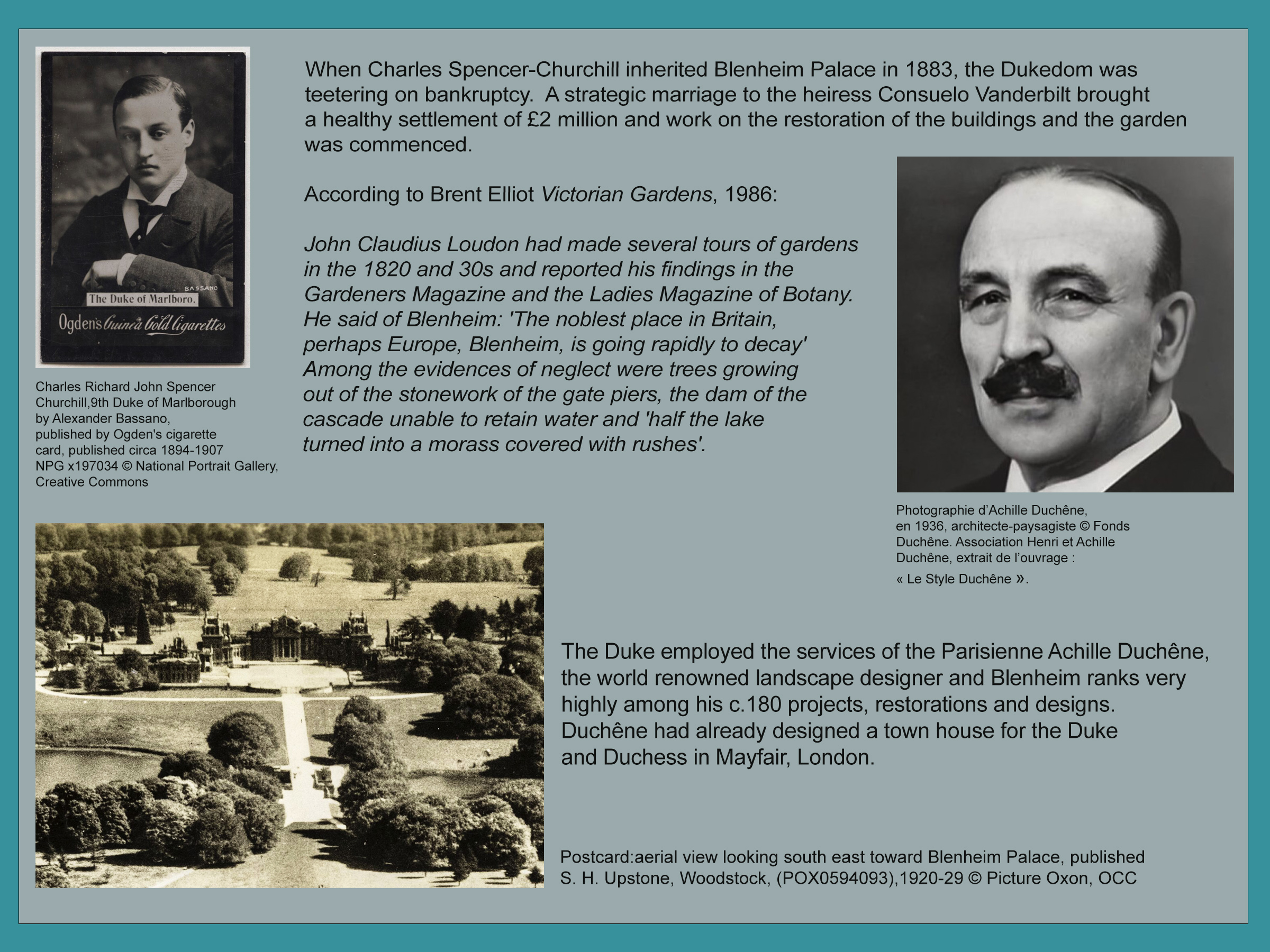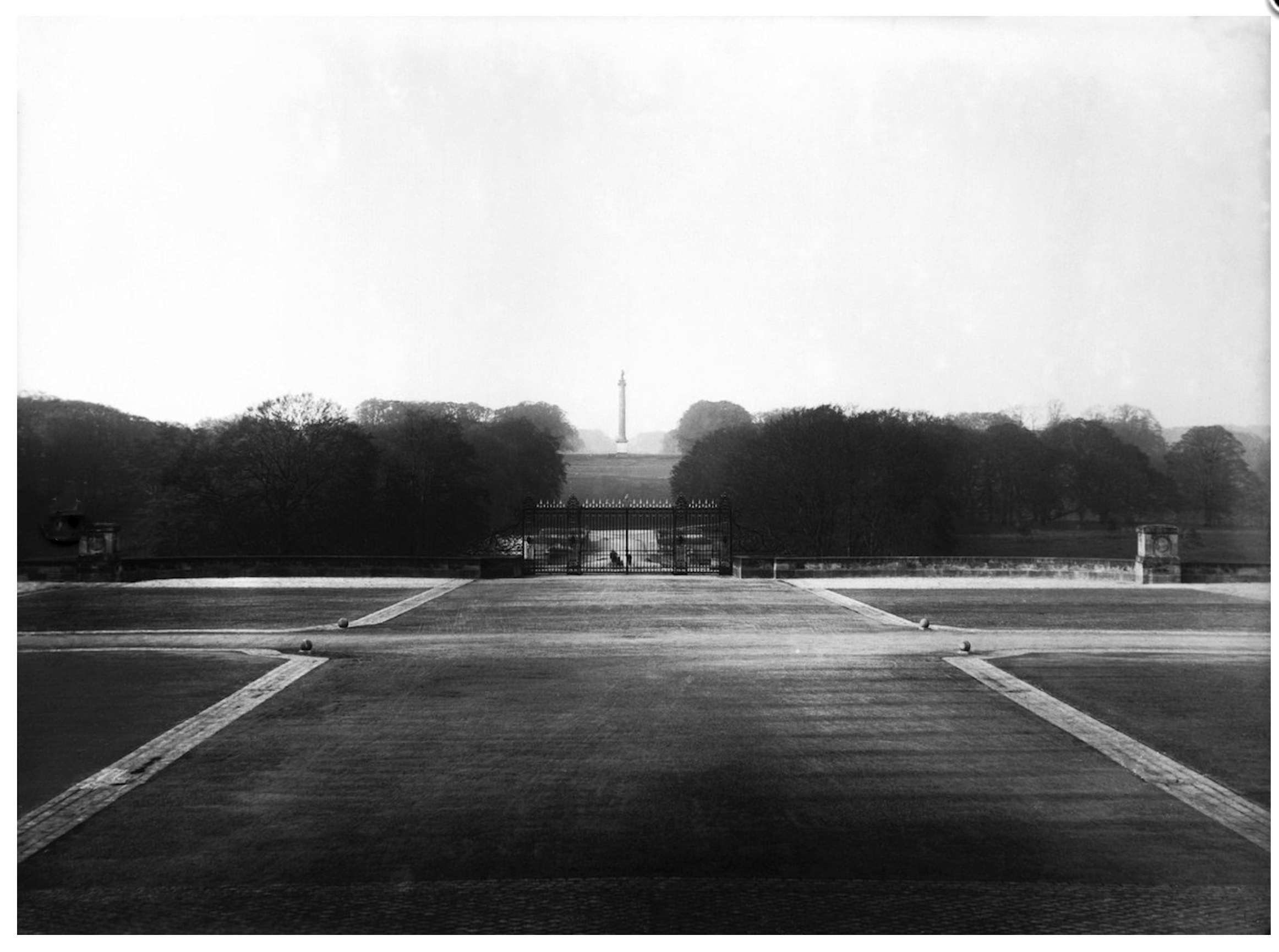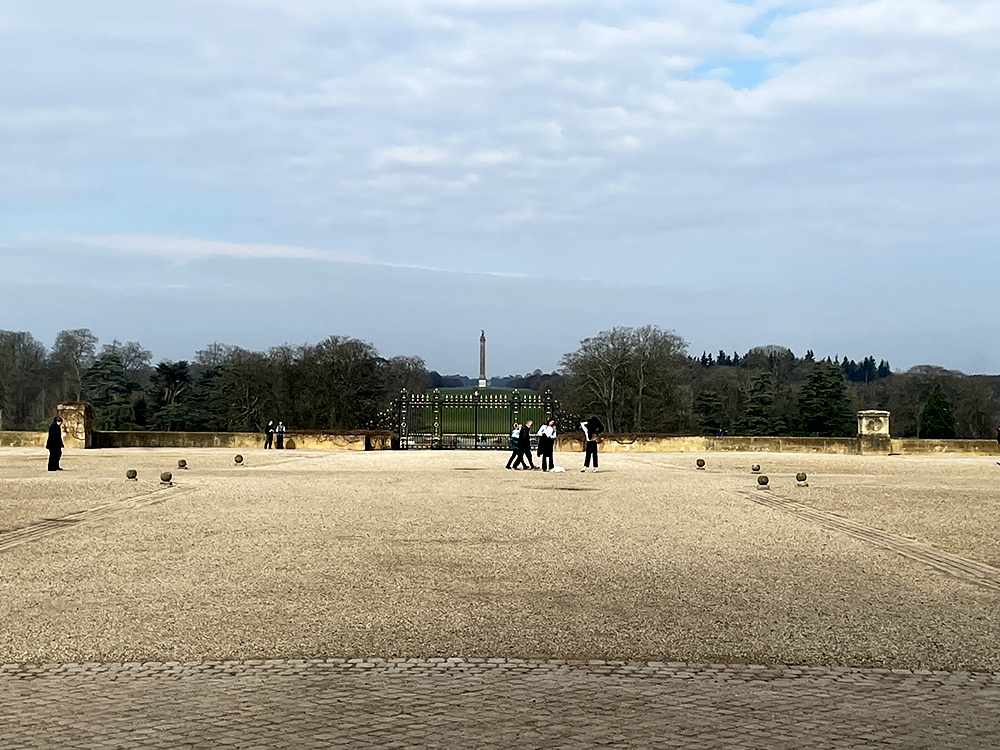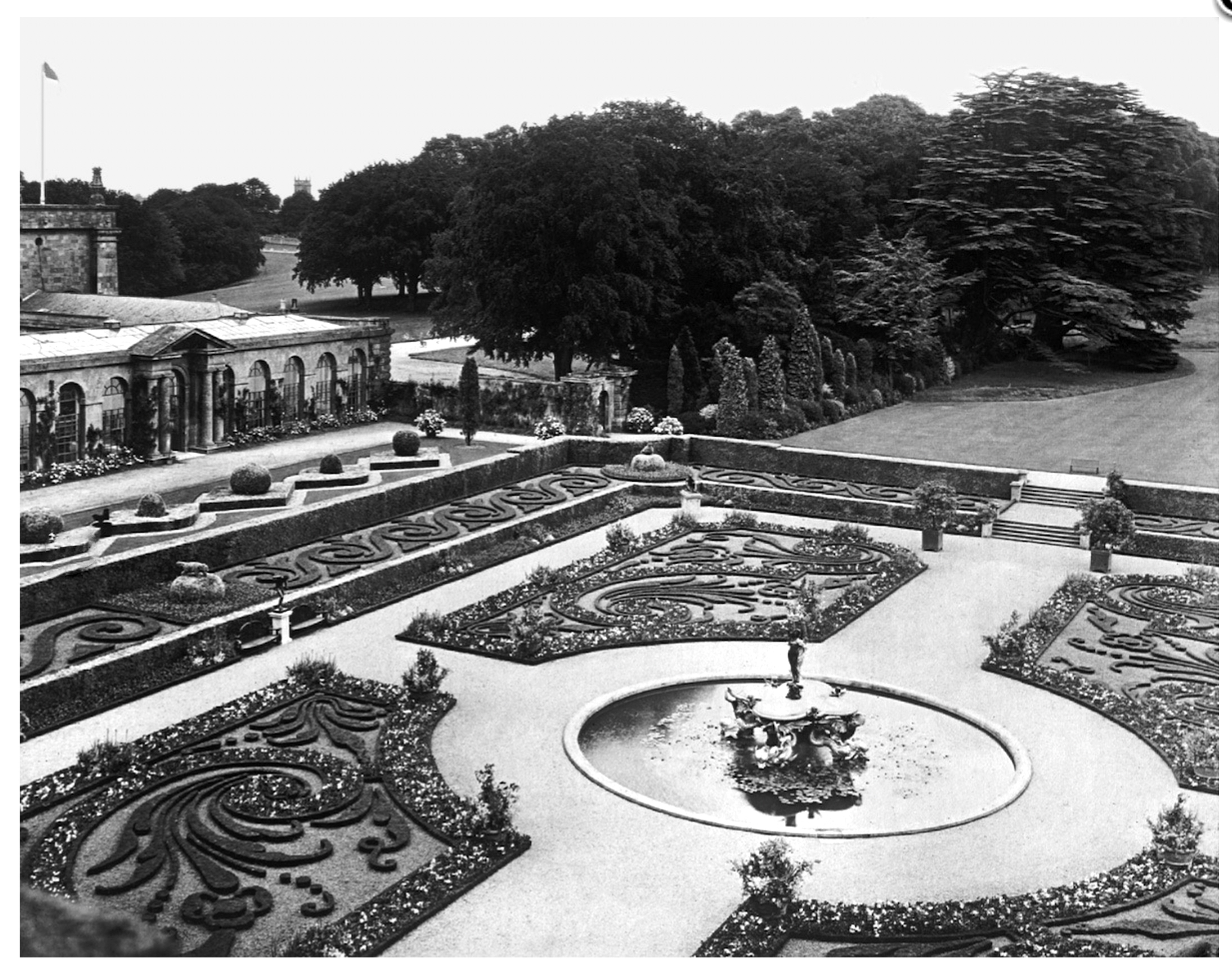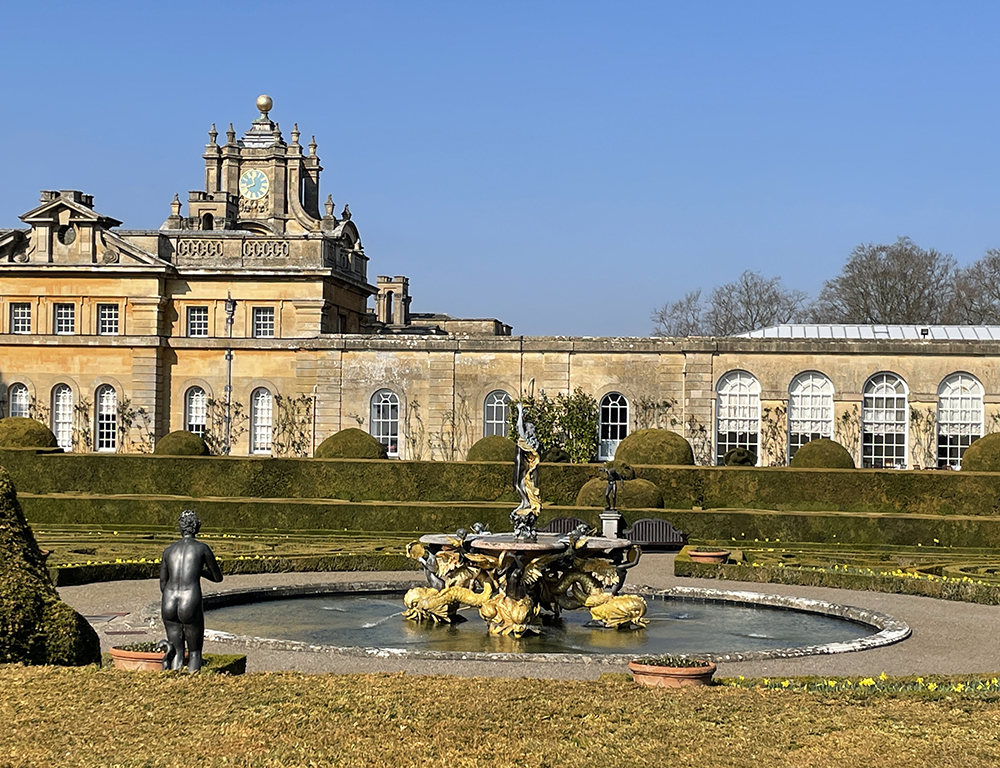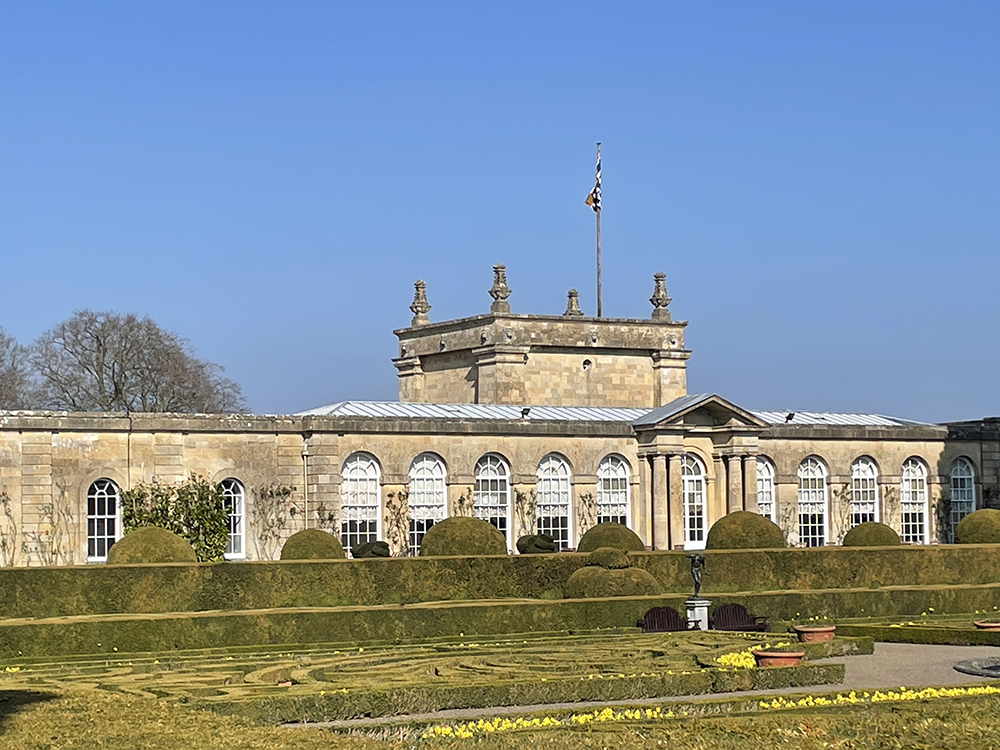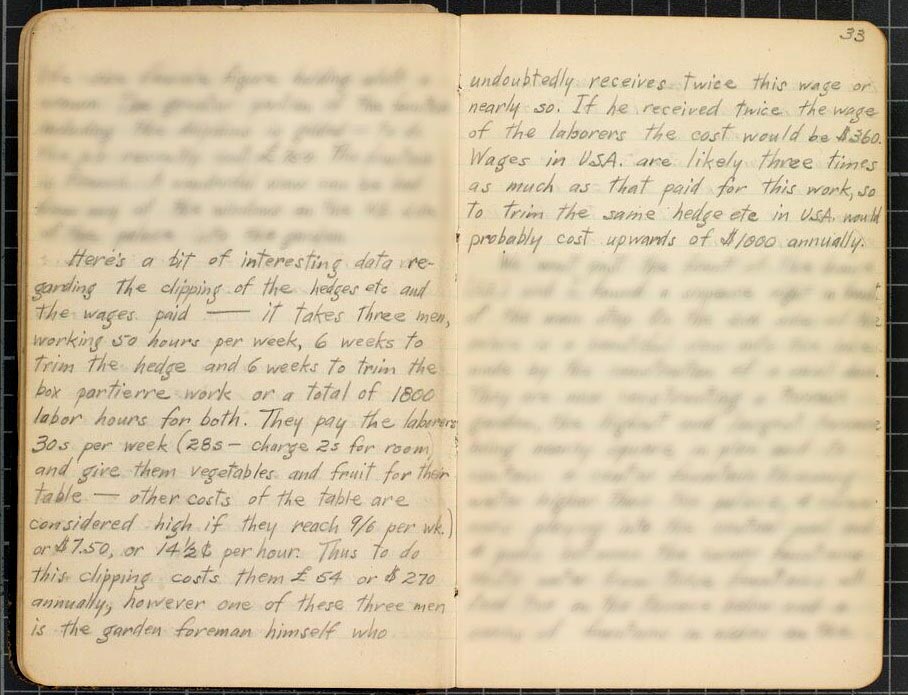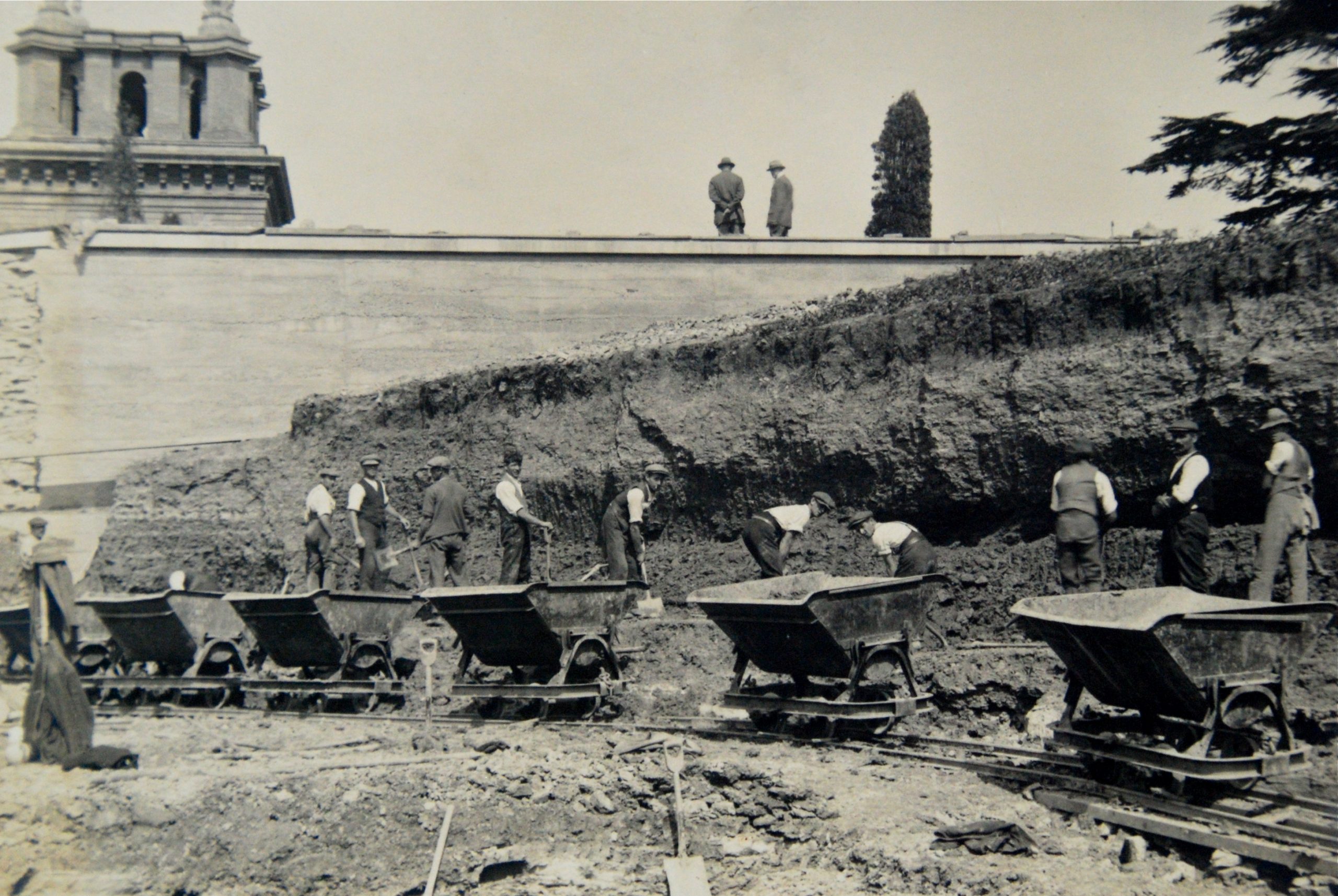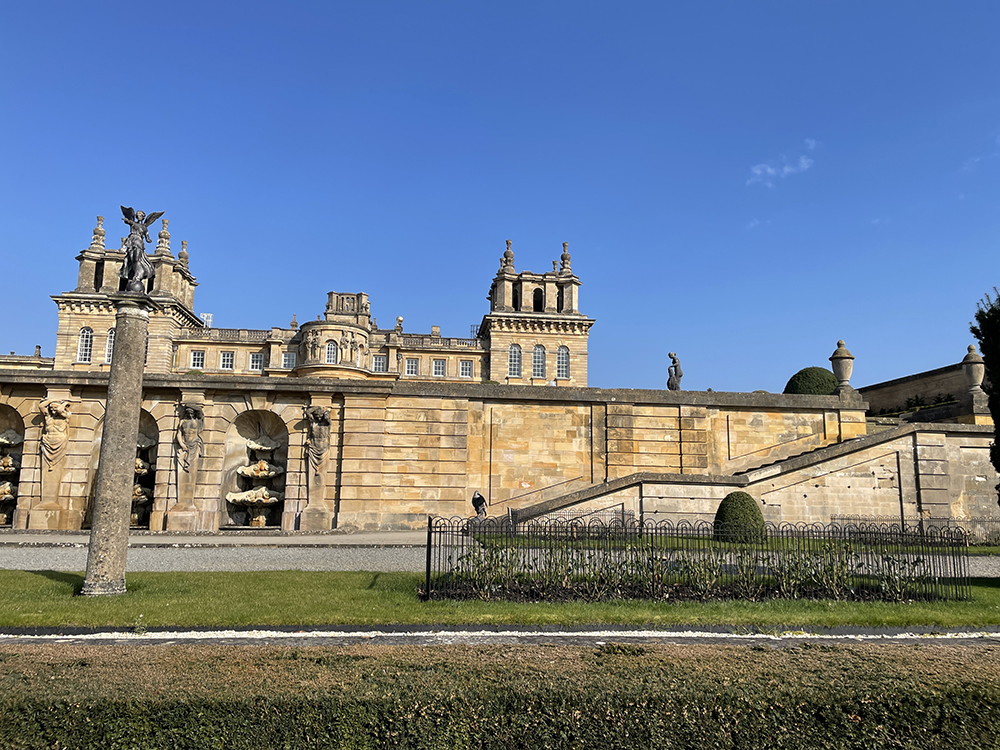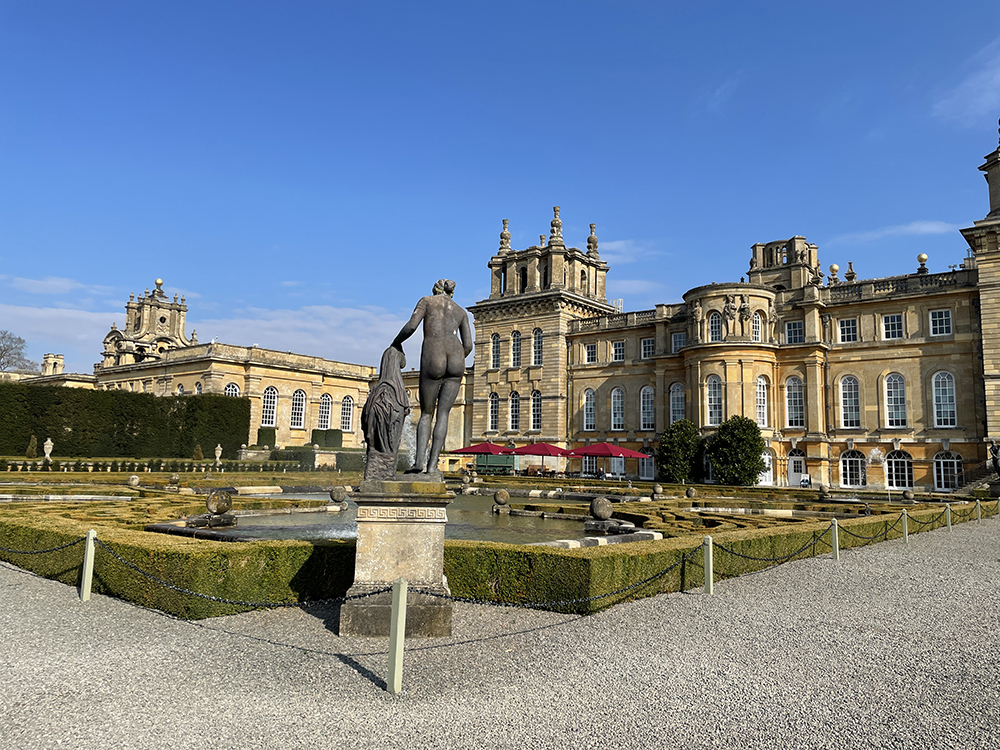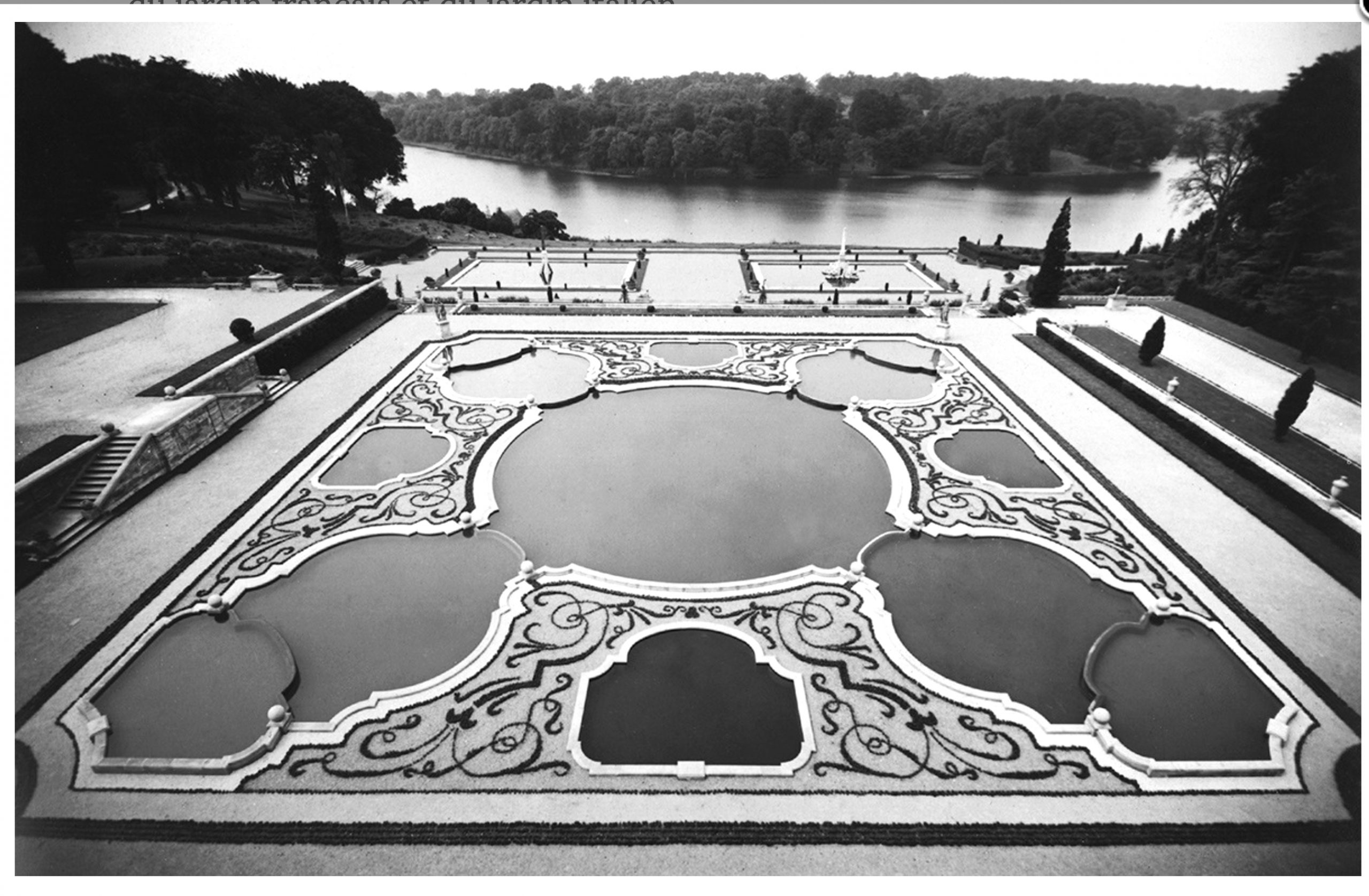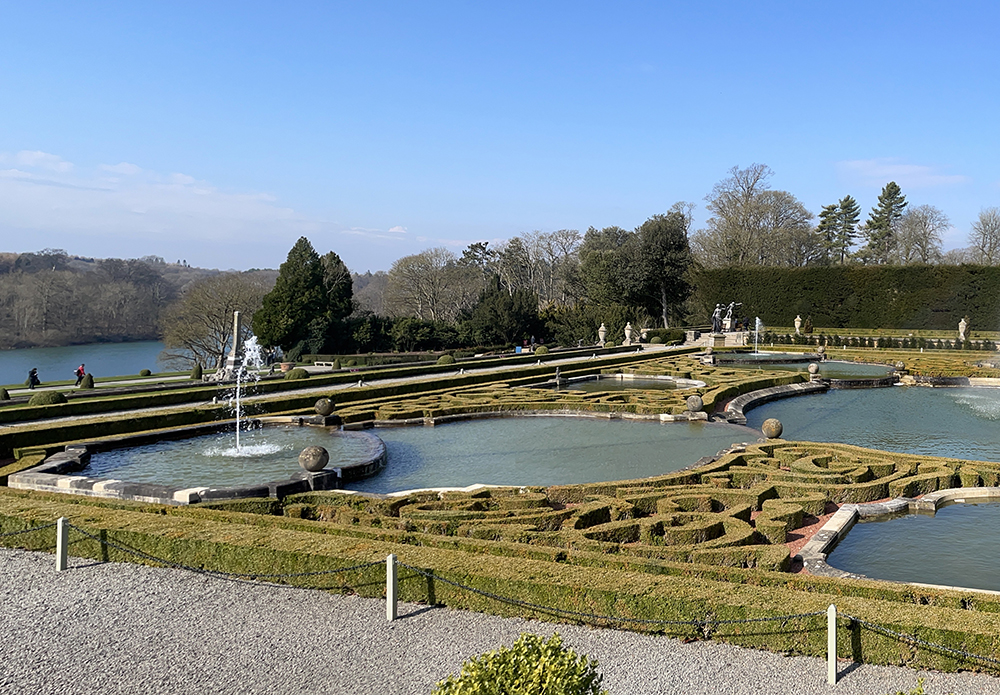26th July 1928
Arriving at Blenheim Palace at 7 00pm they found the gardens shut but nothing daunted, they sought the Head Gardener and asked for an immediate tour. They were told that the Duke and Duchess (the 9th Duke of Marlborough and second wife Gladys Deacon) were enjoying the gardens themselves as the Palace had been open to visitors for three days. Mr Tomkins, the Head Gardener, told them to return in the morning at 7 00am and they would be given a tour by Mr Hollis, the foreman of the pleasure gardens.
Loyal and Sam start their tour the following day by going through the conservatory out into the Italian Gardens. Loyal was greatly impressed by the Italian Garden, the construction of the ‘water terraces’ and some of the magnificent old trees. What he doesn’t mention is the American connections that both the garden and the Palace hold and not a word about Capability Brown or Achille Duchêne.
In c. 1920 the Duke and Duchêne commenced restoration of the 3 acre North Court, in front of the Palace, facing north west in line with the Vanbrugh bridge. Where Capability Brown had grassed over Vanbrugh’s parterre, Duchêne replaced the grass with a simple pattern of paving and gravel.

Sketch of the water terraces, in Loyal’s diary. RHS Lindley Collections
Next they turned their attention to the then typical Victorian garden to the south east of the house. Duchêne incorporated the existing magnificent Mermaid Fountain (installed initially in 1899) designed by the American Waldo Story, into four grand parterres de broiderie of yew and box with a red gravel infill. Johnson notes the four dolphins holding the basin with the ‘life size figure of a female holding a crown aloft’. He also notes that ‘The greater portion of the fountain including the dolphins is gilded – to do the job recently cost £750’. Johnson draws a partial cross-section to illustrate the layout of the garden.
The Italian garden was completed by c 1922.
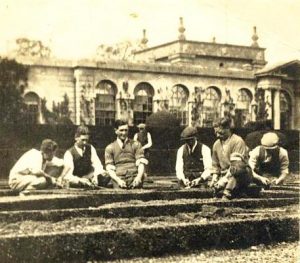
Six gardeners and two boys, trimming the box hedges in the Italian Garden at Blenheim c 1930. RHS Lindley Collections
By 1925, work had begun on the French garden, outside the west of the house and running down to the edge of the lake. It is a magnificent construction of two separate terraces, including fountains, pools and running water. The upper terrace has eight scalloped pools, a large central pool and fountains framed in parterres with scrolls of box. Whilst the lower terrace has two lozenge shaped pools with central sculptures. One holds a smaller reproduction of Bernini’s fountain in the Piazza Navona in Rome, flanked by winged sphinxes. (The fountain was given to the Duke of Marlborough in 1710 by the Spanish Ambassador to the Papal Court in Rome. Anecdotally it was apparently hidden away in some bushes out of sight on the estate until it was restored in 1932). Johnson notes in his dairy:
“They are now constructing a terrace garden, the highest and largest terrace being nearly square in plan and to contain a center fountain throwing water higher than the palace, 4 corner ones playing into the central pool and 4 pools between the corner fountains will feed two on the terrace below and a series of fountains in niches on the terrace wall. Two more smaller terraces with a cascade etc will be built the last one extending into the lake”.
The terraces were completed in 1930. The third terrace to which Johnson refers was never completed as during construction the land slipped into the lake. The Duke was ‘not amused’ and blamed the workmen!
Undoubtedly Loyal Johnson was knowledgeable about trees. He was duly impressed with the age a size of some of the great oaks in the park and was lucky enough to see the avenue of elms leading to the court entrance from the north east. He mentions the Wellingtonia Pine (extant) planted by King George V, when a prince and a pine planted by ex-Kaiser Wilhelm II, who spent a day visiting on 24th November 1899.
Loyal and Sam got wet for the first time in a while that day:
‘It rained continuously on us while we were there for an hour and a half so we had to change all our clothes and dry out. It let up some about noon so we came on to Oxford in the afternoon’.
References
Association Henri et Achille Duchêne – https://www.henri-et-achille-duchene.com (assessed September 2022)
Bapasola, J., The First View in England – The Landscape and Gardens at Blenheim Palace, 2009, Blenheim Palace
Elliot, B., Victorian Gardens, 1986, Batsford
Marsh, D., Achille Duchêne @ Blenheim, 2016 https://thegardenstrust.blog/2016/11/19/achille-duchene-blenheim/ (assessed September 2022)
Musée des Arts Décoratif, Paris- Le Style Duchêne https://madparis.fr/le-style-duchene (assessed September 2022)


